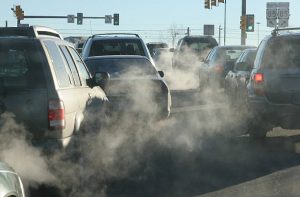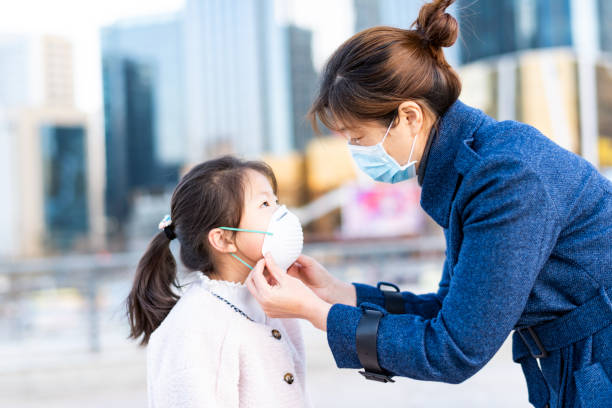There are few simple pleasures in life as underrated as taking a deep, invigorating breath of pure, clean air. The sensation of oxygen flowing into our lungs, dispersing life-giving vitality throughout our bodies, is something we often take for granted. Yet, in an increasingly industrialised world, the quality of the air we breathe is being continuously compromised due to the escalating issue of air pollution. The ramifications are clear and concerning, particularly when we regard our respiratory health. This exploratory article is a comprehensive guide to understanding the subtle ways in which contaminated air can have adverse effects on our respiratory system and offers proactive measures to help reduce harm.
Contents
- 1 In our shared understanding of the air pollution crisis
- 2 In rediscovering the art of breathing
- 3 Uncovering the hidden threats in our environment
- 4 So, how exactly does air pollution ignite respiratory diseases?
- 5 Bringing to light the damage caused – in numbers
- 6 Your safety shield – strategies to combat air pollution hazards

Air pollution—two words that have become synonymous with some of the greatest environmental challenges that our world faces today—is a formidable opponent. It comprises a dangerous blend of invisible particles and noxious gases, permeating the very air we breathe. A product of both natural phenomena and human-created actions such as the combustion of fossil fuels, industrial manufacturing processes, and copious motor vehicle emissions, air pollution pervades our environment, invading our bodies one breath at a time.
In rediscovering the art of breathing
As humans, our relationship with the principle of respiration—our ceaseless rhythm of inhalation and exhalation—is intricate and relentless. Each inhalation introduces vital oxygen into our lungs, and every exhalation dispels waste carbon dioxide. This essential biological cycle, however, is unfortunately disrupted when the air we breathe is laced with pollutants. In doing so, we unknowingly facilitate the entry of these harmful substances into our bodies, risking potential damage to our overall well-being, with a specific focus on our respiratory health.

Peering into the composition of this seemingly invisible enemy, we find a toxic concoction of substances that have far-reaching health implications. This damaging cocktail includes particulate matter such as dust, soot, and smoke, and noxious gases like carbon monoxide, sulphur dioxide, and nitrogen dioxide. Also intricately woven into this harmful web are volatile organic compounds and heavy metals. These pollutants, once inhaled, pose substantial threats to human health, with a specific emphasis on sparking inflammation in our respiratory system.
So, how exactly does air pollution ignite respiratory diseases?

To comprehend how air pollution becomes a precursor to the dreaded ailment lying dormant in our respiratory systems, we need to venture into the complex world of respiratory physiology. Now, the lungs, comprising millions of tiny, sac-like structures known as alveoli, are the hub for the exchange of gases. However, when persistent exposure to particles and gases from polluted air occurs, inbound damage to these delicate structures incites a chronic inflammatory response. With time, such continuous inflammation can evolve into chronic respiratory disorders including asthma, bronchitis, and most devastating of all – lung cancer.
Bringing to light the damage caused – in numbers

The World Health Organization (WHO) has given voice to concern by sharing alarming statistics: an estimated 91% of the world’s population breathe air that does not meet WHO’s desired quality levels. Ambient air pollution, as indicated by WHO, has been linked to 4.2 million premature deaths worldwide.
- Of these deaths, respiratory diseases account for approximately one million deaths annually.
- Asthma, a condition frequently sparked or exacerbated by air pollution, is currently experienced by roughly 339 million individuals across the globe.
- Looking more locally, the US Environmental Protection Agency estimates that reducing air pollution could circumvent 230,000 premature deaths by 2030.
Your safety shield – strategies to combat air pollution hazards

Completely evading the clues of atmospheric pollutants is likely impossible. The good news is that we can take measures to limit our exposure to them.
- Closely monitor air quality forecasts and restrict outdoor activities on days when pollution levels touch the higher side.
- Indoor workouts can be an excellent alternative on bad air quality days, decreasing the risk of filling the lungs with polluted air during vigorous exercise.
- Air purifiers can serve as valuable allies, cutting down the levels of indoor air pollutants.
- Integrate more greenery into your space, planting trees and other plants that naturally filter and clean the ambient air.
- Finally, every individual can contribute to reducing air pollution by adopting greener ways of life such as using public transport or choosing to cycle or walk whenever feasible.
The detrimental impact of air pollution on respiratory health is a reality we must confront and comprehend fully. Starting with increased awareness and supplemented by taking protective measures, each of us can contribute directly to our well-being and indirectly to the health of our planet. In the beautiful dance of life, each breath matters. Let us pledge to safeguard the purity of our breaths and work towards a future where every inhalation is an affirmation of health, vitality, and life itself.

